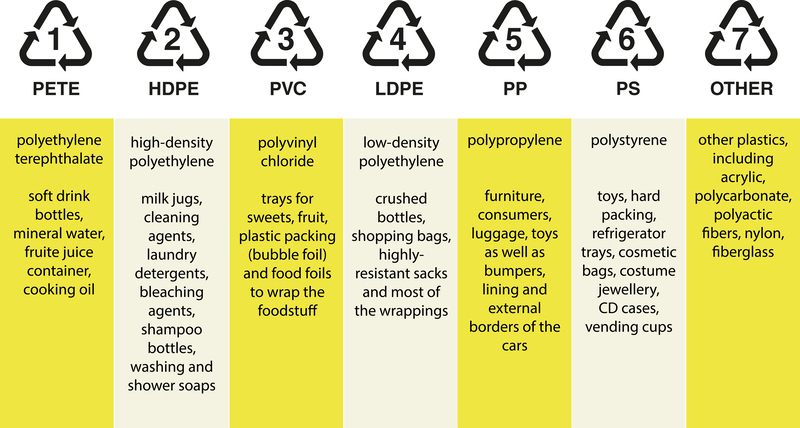Reduce Pollution by Disposing PPE Waste the Right Way
The global surge in the use of Personal Protective Equipment (PPE) since the Covid-19 pandemic has contributed significantly to environmental pollution. When people and organizations fail to dispose of PPE waste the right way, it ends up in our oceans, rivers, streets, and landfills. This comprehensive guide will help you understand how to reduce pollution by disposing PPE waste the right way, why it's crucial for our planet, and practical strategies that both individuals and businesses can implement.
Why Proper Disposal of PPE Waste Matters
PPE waste disposal is not just an issue about litter -- it is closely linked to pollution reduction, public health, and ecosystem balance. The improper disposal of face masks, gloves, face shields, and other single-use equipment has amplified our waste management challenges. Here are some vital reasons why disposing of PPE waste properly matters:
- Prevents soil and water contamination: PPE materials often contain plastics and chemicals that leach toxins into ecosystems.
- Protects wildlife: Animals commonly ingest or get entangled in improperly discarded PPE.
- Reduces microplastic pollution: Most PPEs degrade into microplastics, contributing to water and food chain contamination.
- Minimizes the risk of spreading infectious diseases: Used PPE can harbor harmful viruses and bacteria.
- Alleviates the waste management burden: Sorting and correctly disposing of PPE helps solid waste authorities handle pandemic-related waste surges.

Understanding PPE Waste and Its Environmental Impact
PPE waste includes a variety of items meant for single or limited use, such as masks, gloves, gowns, and face shields. These items protect against infection but are typically made from non-biodegradable plastics like polypropylene and polyvinyl chloride.
How PPE Waste Contributes to Pollution
Once disposed of incorrectly, these items can remain in the environment for hundreds of years. They break down into smaller plastic particles -- known as microplastics -- that infiltrate soil, waterways, and the food chain. Birds, marine life, and even domestic animals can suffer severe consequences from ingesting or becoming entangled in PPE litter.
- Face masks and gloves are now among the most common types of litter worldwide, found on beaches, sidewalks, and in oceans.
- Incineration of PPE releases toxic gases and microplastics into the air if not handled properly.
- Landfilled PPE waste occupies increasing landfill space and produces leachate that pollutes groundwater.
How to Reduce Pollution from PPE Waste: Best Practices
To reduce pollution by disposing PPE waste the right way, collaboration between individuals, organizations, and government is essential. Here are action steps and best practices for responsibly handling PPE waste.
Step 1: Separate PPE Waste at the Source
Always keep PPE waste apart from recyclables and general waste. This avoids contamination and aids proper treatment. Use dedicated bins labeled for PPE items in homes, workplaces, and public spaces.
- At home: Place a clearly labeled bag or small bin for used masks and gloves. Seal the bag before disposal.
- At work/public facilities: Ensure availability of color-coded PPE-specific bins in high-use areas.
Step 2: Safe Collection and Storage
Wear gloves when collecting used PPE to minimize the risk of infection. Store used items in a separate, closed container until they can be taken to a proper disposal facility.
- Avoid overstuffing bins -- this prevents overflow and potential contamination.
- Use bins with foot pedals or no-touch lids to reduce contact.
Step 3: Proper PPE Waste Disposal
The ideal way to dispose of PPE waste is to use designated municipal solid waste systems or hazardous waste collection points. Never attempt to recycle single-use PPE through home recycling systems since these materials can damage equipment and put waste handlers at risk.
- Do not throw PPE waste on streets, in nature, or public recycling bins.
- If you're unsure about local PPE disposal rules, check with your city's waste management authority.
- In some areas, PPE waste should be double-bagged -- especially when used by those infected or exposed to infectious diseases.
Step 4: Encourage and Participate in Take-Back or Collection Programs
Many communities and some retailers now offer PPE recycling or take-back programs. These schemes ensure that PPE is processed through high-temperature incineration, autoclaving, or advanced recycling technologies developed specifically for medical waste.
- Check for local drop-off points for used masks and gloves at pharmacies and large stores.
- Healthcare facilities should work with certified waste removal companies specializing in hazardous waste.
Step 5: Support Reusable Alternatives Whenever Safe
While single-use PPE is critical in many medical settings, the general public can often safely use reusable face masks and gloves. By opting for reusable options, you dramatically cut down on PPE waste generation.
- Choose washable cloth masks with multiple layers and appropriate fit.
- Sanitize and store reusable PPE properly to prevent cross-contamination.
Innovations and Solutions for PPE Waste Management
Tackling PPE waste pollution requires not only responsible behavior but also technological and policy innovations. Here are some emerging solutions making a difference in PPE waste reduction:
Advanced Recycling Techniques
- Thermal recycling: Specialized facilities can convert PPE plastics into fuel or raw materials for new products.
- Mechanical recycling: Processes that grind and repurpose clean, sorted PPE waste for construction materials or plastic lumber.
Biodegradable PPE
- Start-ups and researchers are creating masks and gloves from biodegradable materials, reducing the impact of improper disposal.
- Compostable PPE is becoming available in some markets -- though only industrial composters can currently handle these items.
Policy Solutions
- Governments can mandate proper PPE disposal, fund public awareness campaigns, and regulate PPE manufacturing to favor recyclable or biodegradable materials.
- Corporate social responsibility: Businesses can set up PPE collection bins and work with recycling partners to ensure the right disposal.
Tips for the Public: How You Can Help Reduce PPE Waste Pollution
Everyone plays a role in keeping our environment safe from PPE-related pollution. Here's how you can act today:
- Never litter PPE-- Dispose of masks, gloves, and wipes in appropriate waste bins only.
- Carry a spare bag or pouch when traveling to store used PPE before proper disposal.
- Switch to reusable PPE wherever safe and possible.
- Share educational content on correct PPE waste disposal on social media and in your community.
- Report overfilled or improperly managed public PPE waste bins to local authorities.
What Businesses and Institutions Can Do
Organizations -- especially those in healthcare, hospitality, and retail -- have a special duty to reduce PPE pollution stemming from their operations. Here are strategies they can adopt:
- Set up dedicated PPE disposal units throughout facilities.
- Train staff on safe handling and collection protocols.
- Work with certified waste management companies to ensure eco-friendly PPE processing.
- Encourage or provide reusable PPE to staff where appropriate.
- Place public notices and signage about responsible PPE waste disposal.
Promoting a Workplace Culture of Environmental Responsibility
Make PPE waste reduction part of your company's sustainability goals by including it in staff training, annual reviews, and recognition programs. Encourage employees to make suggestions for further minimizing single-use waste.
Challenges in PPE Waste Disposal and Overcoming Them
Disposing of PPE waste the right way is not without hurdles. Common challenges include lack of awareness, insufficient bins, confusion around recycling, and absence of sustainable alternatives. Here's how you can help overcome these obstacles:
- Advocate for more public PPE disposal bins in schools, parks, and city centers.
- Encourage local authorities to implement clear guidelines and communicate them widely.
- Support policies and businesses investing in PPE recycling technology and bio-based products.
FAQ: PPE Waste Disposal and Environmental Pollution
What is the safest way to dispose of a used face mask?
Seal the mask in a plastic or biohazard bag, then place it in a dedicated waste bin. If neither is available, use a double-layered rubbish bag and avoid mixing masks with recyclables.
Can PPE like face masks and gloves be recycled?
Currently, most municipal recycling programs do not accept PPE due to contamination risk and material complexity. Look for special programs or drop-off locations handling PPE waste recycling.
What happens if PPE waste is littered?
It can end up polluting natural habitats, blocking drains, harming wildlife, and breaking down into harmful microplastics. It may also pose biohazard risks if contaminated.
Are there alternatives to single-use PPE?
Yes. Well-designed, reusable masks and gloves are available for the general public. However, reusable PPE is not recommended in medical settings where contamination risk is high.

Conclusion: Every Action Helps to Reduce Pollution from PPE Waste
The challenge of reducing pollution by disposing PPE waste the right way demands collective effort. Individuals must dispose of PPE responsibly; businesses and institutions should implement sound waste management protocols; and governments must foster a supportive infrastructure and innovate solutions. Every small action, from properly bagging your face mask to supporting eco-friendly PPE manufacturers, helps create a cleaner, safer future. Let's work together to keep our surroundings and our planet healthy by handling PPE waste with care and responsibility.
Further Reading and Resources
- World Health Organization PPE Waste Management Guidelines
- US Environmental Protection Agency: PPE Waste and Pollution
- How to Dispose of COVID Masks and Gloves to Protect the Environment
Together, we can reduce PPE pollution -- for ourselves, future generations, and the planet.
